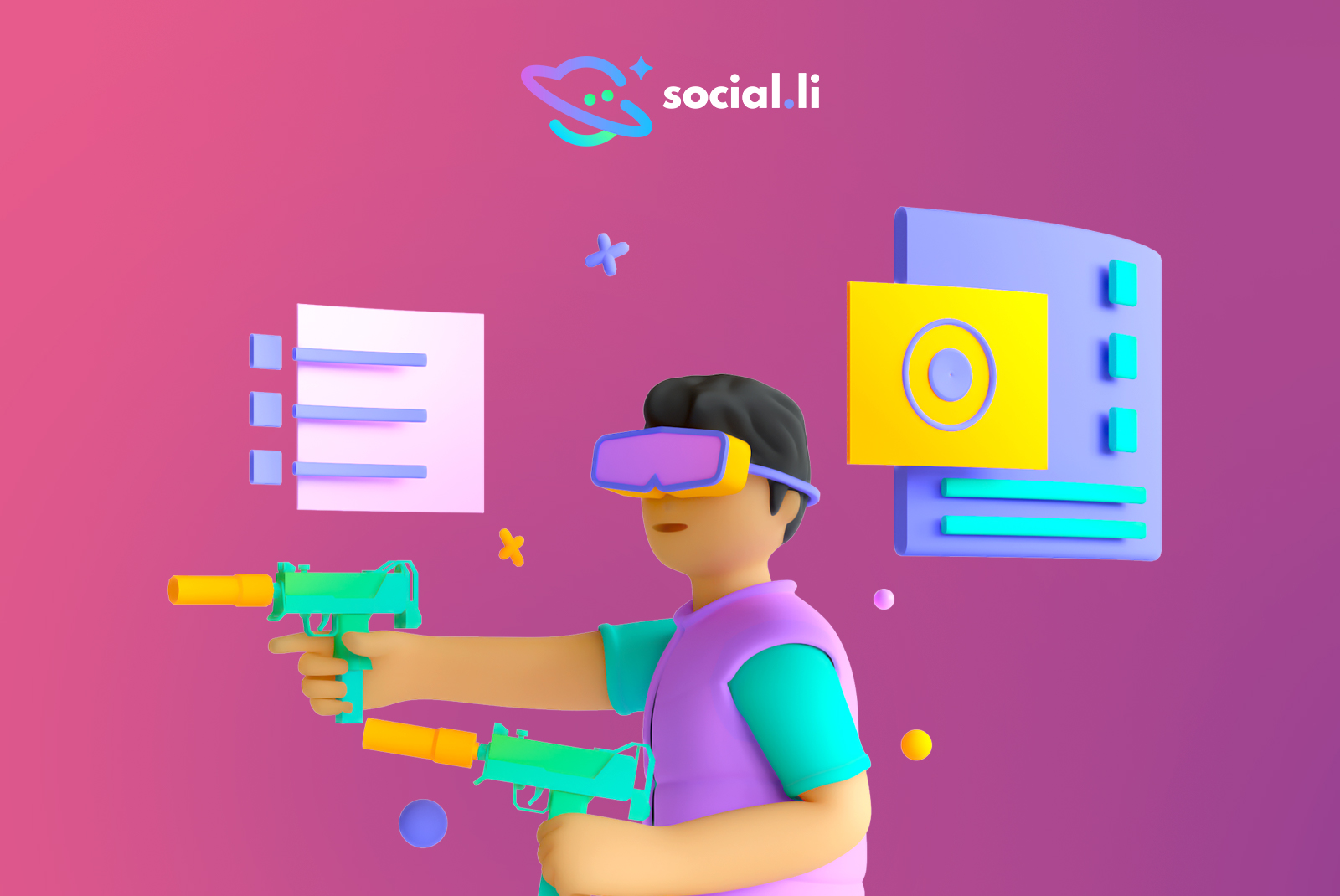The past year has seen an explosion of new trends in the metaverse, a technology-driven virtual world in which users can interact with each other and explore virtual spaces.
From virtual concerts to virtual reality gaming, the metaverse is rapidly becoming an integral part of our lives. From the rise of blockchain-powered virtual economies to the emergence of sophisticated social networking platforms, the metaverse is quickly becoming an essential part of our lives.
As advancements in virtual reality technologies continue to make the metaverse more accessible and immersive, it is transforming the way we interact with each other and experience the world around us.
The Journey of Metaverse from Imagination to Reality
The journey of the Metaverse is a fascinating exploration of the future of virtual reality and the potential of the internet. It has been described as a “digital universe” that exists parallel to the physical world, a virtual world populated with avatars and other entities.
The Metaverse is an ever-evolving ecosystem of interconnected virtual worlds, with a wide range of applications including virtual education, online gaming, virtual shopping, and virtual tourism. Today, the Metaverse is an exciting and rapidly growing space. Major technology companies are investing in the development of virtual reality technologies, and the Metaverse is becoming increasingly accessible to the general public.
Metaverse Trends for the Future
The metaverse is an evolving, three-dimensional online space that is accessible through various technologies, such as virtual reality and augmented reality. It is a virtual world where people can interact, socialize, and create in a persistent digital universe. This blog highlights the potential Metaverse trends for 2023 as well as the coming years.
1. Immersive Experiences with increased adoption of AR and VR
Immersive experiences are quickly becoming the norm as the increased adoption of augmented reality (AR) and virtual reality (VR) technologies continues to surge. By utilizing these technologies, users can be completely immersed in an alternate reality, where they can interact with digital objects and explore a world that is completely different from their own.
AR and VR are quickly becoming the go-to technology for businesses and consumers alike. Businesses can use immersive experiences to train employees, simulate real-life scenarios, and create interactive experiences for customers. Consumers can use AR and VR to explore new places, experience thrilling adventures, and engage with their favorite characters. The increased adoption of AR and VR is driving the development of new and exciting immersive experiences.
Companies are developing apps and games that blur the lines between the physical and digital world and create a more engaging experience for users. Innovative hardware and software is helping to make these experiences more realistic and engaging. The future of immersive experiences is looking very bright.
With continued advances in AR and VR technology, users will have access to more immersive experiences than ever before. Companies are already beginning to capitalize on this trend by creating new and exciting experiences that can be used to drive customer engagement and loyalty. As these technologies become more widely adopted, the possibilities are endless.
As the metaverse continues to develop, immersive experiences are likely to become commonplace. This could include virtual reality, augmented reality, and other immersive technologies that allow users to interact with and explore the digital world.
2. Digital economy
The metaverse is likely to become an economy where users can buy and sell digital goods and services. This could include virtual currencies, digital assets, and other digital commodities. The digital economy in the Metaverse allows users to buy, sell and trade digital assets within the Metaverse.
These digital assets can either be physical objects or digital representations of physical objects. This allows for the creation of a virtual economy, where users can purchase virtual items, services and even real-world goods and services. This type of economy could have a huge potential to revolutionize the way we shop and do business online.
The digital economy in the Metaverse also has the potential to create a new form of digital currency, which could be used to purchase goods and services within the Metaverse. This could be used to facilitate the purchase of virtual items, services and even real-world goods and services, and could potentially have a major impact on the way we use money online.
3. Security and privacy
The metaverse is a virtual environment that is becoming increasingly popular, with many people using it for entertainment, communication, and business. As the use of the metaverse grows, so does the need to ensure that users’ data, activities, and identities are kept secure. Security and privacy in the metaverse will become increasingly important as the technology behind the metaverse advances.
Security measures such as encryption, authentication, and access control will need to be implemented in order to protect users’ data and activities. Additionally, privacy measures such as controlling who can access certain areas, as well as data and identity protection, will also need to be taken into consideration.
4. Greater integration with other technologies like AI
As the metaverse continues to expand and become more complex, the use of artificial intelligence (AI) could be a possible trend. AI can help to automate tasks, such as managing NPC interactions, creating new content, and helping to shape the overall gaming experience.
By using AI, developers can create more complex game worlds that react to the decisions of players. AI can also help to create more detailed and immersive game worlds by providing dynamic and diverse content. For example, AI can be used to create NPC characters that are capable of engaging in dynamic conversations with players. This could be a great way to add an extra level of immersion to the game experience.
Additionally, AI can be used to facilitate player interactions. AI can be used to help players find others with similar interests, create and host events, and even provide an AI-controlled chatbot that can answer player questions.
The Internet of Things (IoT) has been transforming our lives in a multitude of ways, and its applications are now extending to the metaverse. IoT devices can be used to create a more immersive environment in the metaverse. For instance, users can use sensor-equipped devices to navigate the virtual world and interact with virtual objects. Additionally, sensors can be used to monitor the environment and provide feedback to the user. This could be useful for gaming and other activities in the metaverse.
5. Development of tools and platforms to create content within the metaverse
As virtual and augmented reality technology becomes more sophisticated and affordable, the potential of the metaverse has been growing. One potential trend in the metaverse is the development of tools and platforms to create content. These tools and platforms could allow users to create and share virtual worlds, games, and other experiences in the metaverse.
The development of such tools and platforms could revolutionize the metaverse, making it easier for users to create and share their own content. This could lead to an explosion of creativity, with users creating and sharing experiences that could not have been imagined before. Additionally, such tools could enable the development of metaverse-based businesses and services. This could open up new opportunities for entrepreneurs and developers to create and monetize their own experiences.
Interactivity
Interactivity in the metaverse is a potential trend in virtual reality technology that is growing in popularity. It will be a major trend as the metaverse continues to grow and could include user-generated content, games, and social applications. The metaverse is a virtual world, where users can create and interact with virtual environments, avatars, and objects. Interactivity in the metaverse allows users to interact with each other and their environment in a more immersive and realistic way.
This can lead to a more engaging virtual experience for users, as they can explore, collaborate, and socialize with others. Additionally, interactivity in the metaverse can lead to improved customer experiences, as businesses can offer a more immersive and engaging experience for customers. As technology continues to evolve and become more accessible, interactivity in the metaverse is likely to become a popular trend for virtual reality.
Closing Thoughts
The future of the metaverse is full of possibilities. New trends will continue to emerge and existing trends will become more popular. As the metaverse continues to evolve and become more accessible, the potential for new and innovative experiences is limitless. However, it’s impossible to predict the future, and there may be some unexpected trends that become mainstream in the coming years. Such trends may revolutionize how people interact with the digital world and could have a profound impact on our lives.











Your Own Metaverse
Interoperable Web 3 Metaverses Built on Layer-1 Blockchain.